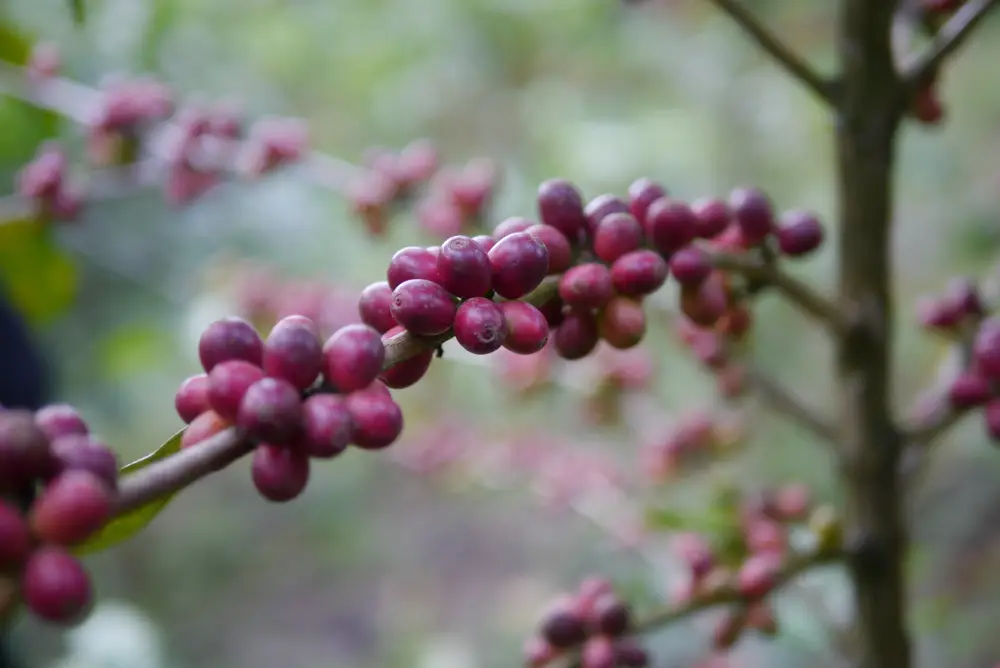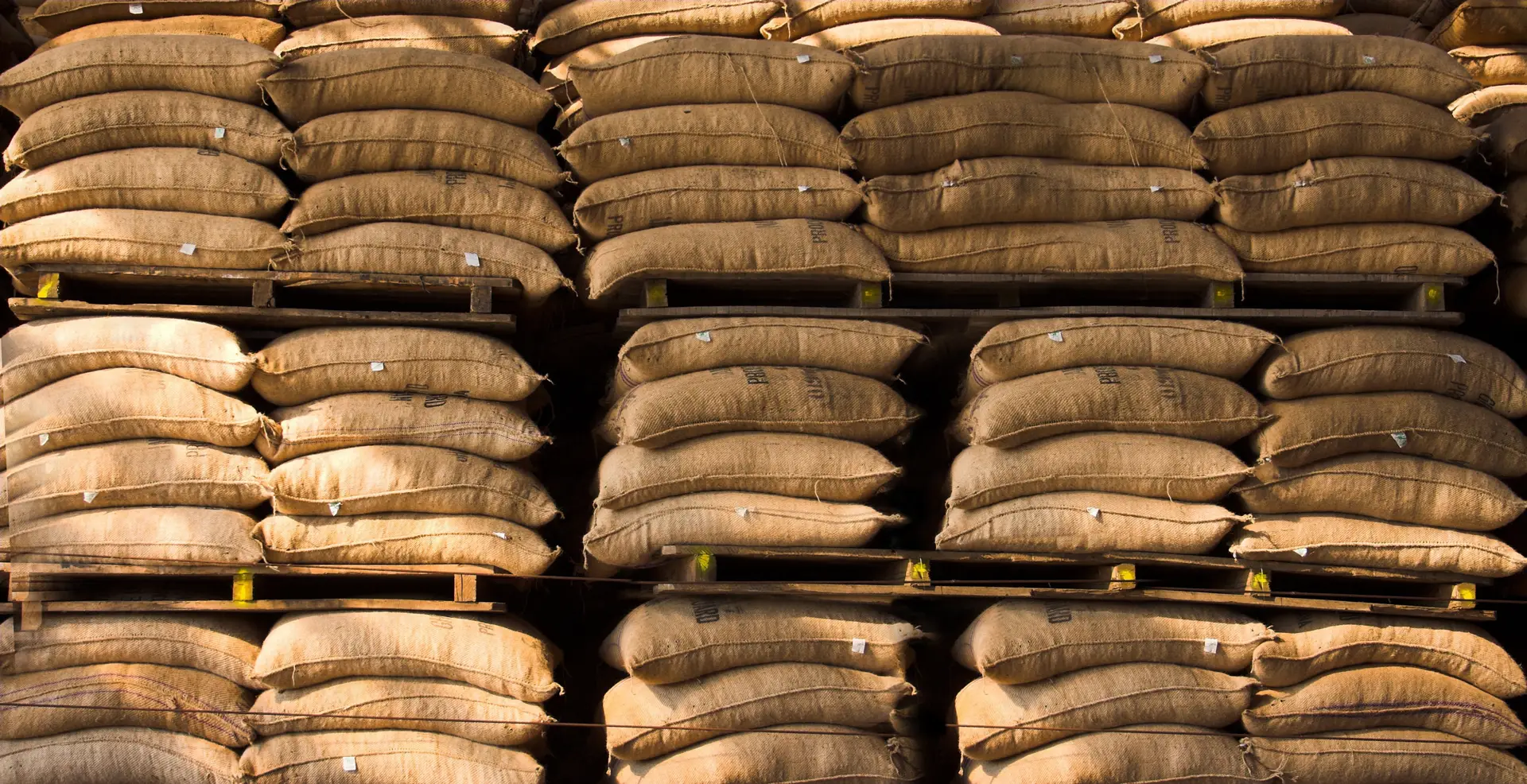
What Is Gesha (Geisha) Coffee?
What Is Gesha (Geisha) Coffee? With so many qualities and varieties to choose from, coffee drinkers have become a very

According to recent statistics from the International Coffee Organization (ICO), nearly 170 million bags of coffee were produced during the crop year 2020/21. With a single bag weighing 60 kilograms (132 pounds), this equates to a jaw-dropping 22,440,000,000 pounds of coffee.
So where does all of this coffee come from?
The world’s coffee is grown by producing countries situated along the earth’s equator, between the Tropic of Cancer and the Tropic of Capricorn. Within this so-called coffee belt, portions of North America, Central America, South America, Africa, the Caribbean, and Asia, are the primary coffee-growing regions of the world.
Where coffee comes from matters a great deal. Factors like altitude, topography, precipitation, and soil chemistry can all influence the flavor and quality of coffee, not to mention its yearly availability and price.
Join us as we tour the world’s coffee-growing regions to find out where coffee comes from and why it’s so important to its quality and flavor.
Coffee is grown in countries lying along or near the earth’s equator. More specifically, a region encircling the globe bordered by the Tropic of Cancer to the north and the Tropic of Capricorn to the south, that is fittingly referred to as the coffee belt.
The world’s coffee belt lies between the Tropic of Cancer and the Tropic Capricorn.

Within the coffee belt lie portions of North America, Central America, South America, the Caribbean, Africa, and Asia, where the world’s coffees are grown.
When it comes to coffee production, there are five primary regions in the world that grow and export coffee for global consumption. They are:
Let’s take a closer look at these regions and the countries within them that grow and produce coffee.
The African continent is widely considered the birthplace of coffee (more on this later). It is also home to some of the most distinct and flavorful coffees on the planet. These are the top five coffee-producing countries in Africa, in order of annual production volume:
| COUNTRY NAME | ANNUAL PRODUCTION (60-KG BAGS) |
|---|---|
| Ethiopia | 7,375,000 bags |
| Uganda | 5,620,000 bags |
| Cote d’Ivoire | 1,775,000 bags |
| Tanzania | 900,000 bags |
| Kenya | 775,000 bags |
Together, all the countries in Africa account for just over 10% of the total global coffee production.
The Asia/Pacific region represents 28% of the world’s annual coffee production and is a major player on the global coffee scene. These are the top five Asia/Pacific coffee-producing countries:
| COUNTRY NAME | ANNUAL PRODUCTION (60-KG BAGS) |
|---|---|
| Vietnam | 29,000,000 bags |
| Indonesia | 12,100,000 bags |
| India | 5,700,000 bags |
| Papua New Guinea | 675,000 bags |
| Lao People’s Democratic Republic | 600,000 bags |
It should be noted that the overwhelming majority of Vietnam’s coffee production is centered on robusta beans (Vietnam is the world’s largest producer of robusta coffee).
Central America produces some of the most prized coffees on the planet. This part of the world is renowned for beans with floral, fruity qualities and big flavor.
Mexico is another major player in the world’s coffee production scene. Technically, Mexico is considered part of the North American continent, although in coffee circles, it is commonly grouped together with Central American countries.
The five largest coffee-producing countries in these regions are as follows:
| COUNTRY NAME | ANNUAL PRODUCTION (60-KG BAGS) |
|---|---|
| Honduras | 6,100,000 bags |
| Mexico | 4,000,000 bags |
| Guatemala | 3,750,000 bags |
| Nicaragua | 2,650,000 bags |
| Costa Rica | 1,450,000 bags |
Altogether, the dozen or so coffee-producing countries in Central America and Mexico account for approximately 11% of the world’s coffee production.
South America is home to the world’s largest coffee producer (Brazil) and the second-largest producer of arabica beans (Colombia). These are the top five producers of coffee in South America:
| COUNTRY NAME | ANNUAL PRODUCTION (60-KG BAGS) |
|---|---|
| Brazil | 69,000,000 bags |
| Colombia | 14,300,000 bags |
| Peru | 3,800,000 bags |
| Ecuador | 500,000 bags |
| Venezuela | 500,000 bags |
All told, 50% of the world’s annual coffee production originates from South America, with Brazil alone accounting for over a third of all the coffee produced worldwide.
According to recent figures, 70 countries grow and produce coffee. Despite its broad global reach, coffee, as we know it today, is not native to the countries where it is currently grown.
Except for one, that is.
According to historians, coffee’s origin can be traced to the highlands of Ethiopia and a humble goatherd named Kaldi.
As the story goes, sometime during the 9th century, a goatherd named Kaldi was tending his flock of goats in Ethiopia when he noticed that several of his animals behaved excitedly after nibbling on the fruit of an otherwise ordinary-looking shrub.
Kaldi picked some of the cherries and took them to a local monastery where he shared his observations with several of the monks. Through a series of “fortuitous” circumstances, these cherries wound up in a fire, were ground up into a powder, and brewed into a concoction with hot water. And the rest, as they say, is history.
While this version of events has never been verified, it is nevertheless a compelling account. There are, however, several historically accurate takeaways, namely:
From its humble beginnings in the Ethiopian highlands, coffee has spread throughout the tropics and various species are now grown and cultivated in dozens of countries. In many parts of the world, scores of people earn their livelihoods at some stage along the coffee supply chain.
Whether you believe in the tale of Kaldi the Goatherd or not, the fact remains that coffee was first discovered on the African continent several centuries ago and was brought to different continents by European traders.
Today, as the world’s second-most traded commodity and one of the most widely consumed beverages on the planet, the significance of coffee in the daily lives of millions of people around the globe cannot be overstated.

What Is Gesha (Geisha) Coffee? With so many qualities and varieties to choose from, coffee drinkers have become a very

What Is Anaerobic Coffee and Why Is It Gaining Popularity? Coffee as a beverage has been around for centuries. Through
Subscribe and be the first to know about new products, special discounts, and limited releases.
We use cookies to enhance your browsing experience, serve personalized ads or content, and analyze our traffic. By clicking “I Understand”, you acknowledge our use of cookies. Visit our Privacy Policy for more info.